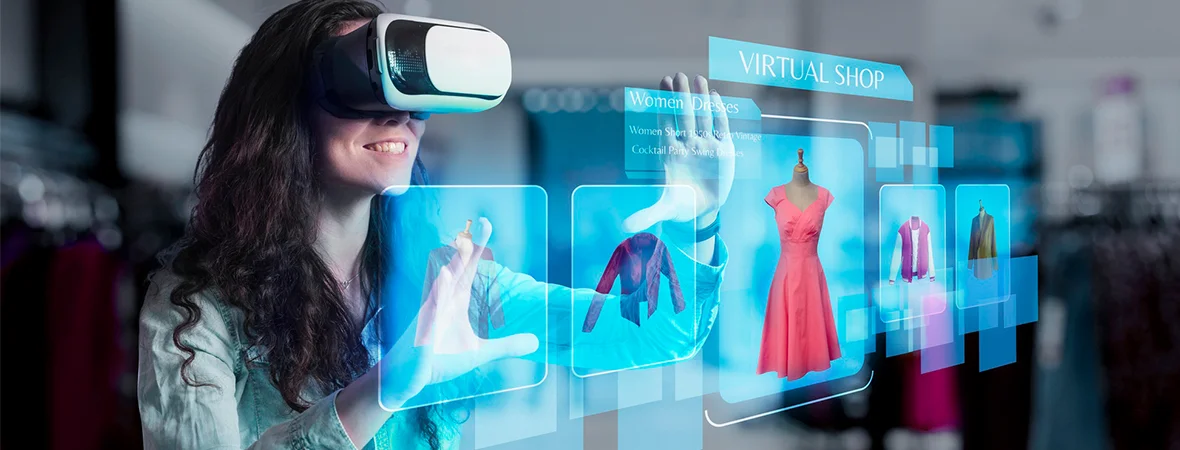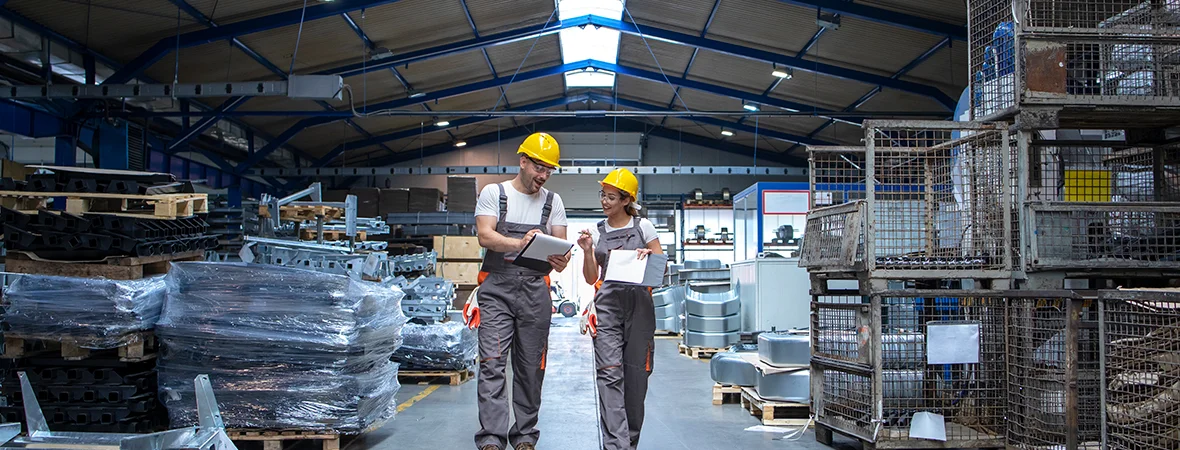
Online shopping has become a huge part of our lives, and new technology is constantly being created to make it even better. One exciting new tool is called Augmented Reality, or AR for short. AR can change the way we shop online by making it more fun and interactive. This blog post will explore how AR is making online shopping even more enjoyable for people around the world.
The Evolution of Online Shopping
Online shopping has come a long way since it first started. Initially, it offered a novel way to shop from the comfort of home—a significant advancement at the time.
Here are few examples that illustrate the journey from nascent technology to the integral part of daily life that online shopping represents today.
-
1979: Using a modified domestic television connected to a telephone line, Michael Aldrich created the first online shopping system. This innovation allowed transactions and communication between consumers and businesses, laying the groundwork for future eCommerce systems.
-
1982: The Boston Computer Exchange served as an online marketplace for people to sell used computers. This platform showcased the potential of online marketplaces for buying and selling goods.
-
1994: The introduction of Netscape Navigator, the first widely used web browser, included protocols for secure communication (SSL encryption), making it safer for consumers to make purchases online.
-
1994: The introduction of Netscape Navigator, the first widely used web browser, included protocols for secure communication (SSL encryption), making it safer for consumers to make purchases online.
-
1995: Amazon started as an online bookstore before expanding into a wide variety of products, while eBay introduced the concept of online auctions. Both companies played pivotal roles in popularizing online shopping.
-
1997: Dell became the first company to record a million dollars in online sales, demonstrating the potential of the internet for direct sales and custom orders in the tech industry.
-
1998: Originally launched as Confinity for Palm Pilot payments and merging with X.com (an online banking company) in 2000, PayPal revolutionized online payments, providing a secure and efficient method for consumers to transact online.
-
2000: Google introduces AdWords. This allowed businesses to advertise to people searching for related products or services, significantly boosting the visibility of online shops, and contributing to the growth of eCommerce.
-
2005: The mid-2000s saw the emergence of social media platforms like Facebook, which eventually introduced features that allowed businesses to sell products directly through their pages, further blurring the lines between social interaction and online shopping.
-
2014: Chinese eCommerce giant Alibaba held the largest initial public offering in history at the time, highlighting the global scale and financial power of online retail.
-
Mobile Shopping and Apps: The widespread adoption of smartphones and the development of shopping apps have made online shopping more accessible and convenient, allowing consumers to shop anytime, anywhere.
But as technology got better, people started wanting more from online shopping. They didn't just want it to be convenient, they wanted it to be fun and interactive, like going to a store. That's where Augmented Reality, or AR for short, comes in. AR is a fancy way of saying that technology can add things to the real world you see. This means you can use AR to see how furniture would look in your home, try on clothes virtually, and even see how makeup would look on your face. All from the comfort of your couch!
Read Also:The Future of Online Shopping: 5 eCommerce User Experience Trends to Watch Out For
Understanding Augmented Reality (AR) in Retail
Augmented Reality (AR) is a technology that superimposes digital information - be it images, videos, or 3D models—onto the real world, enhancing one's perception of their surroundings. Unlike Virtual Reality (VR), which creates a fully immersive virtual environment, AR adds to the reality you are already in, offering a blend of virtual and physical worlds. This integration allows customers to interact with products in a highly intuitive and engaging manner.
In the retail sector, AR can transform how consumers shop online. From virtually trying on clothes to placing furniture in a room to gauge fit and style, AR applications make these and more possible. Imagine pointing your smartphone at your living room and seeing how a new sofa would look in your space, in terms of size, color, and style, or trying on sunglasses from a fashion app without leaving your home. These applications not only make online shopping more interactive but also help consumers make informed decisions.
Benefits of AR in Ecommerce
Personalized Shopping Experiences: AR enables a level of personalization that was previously unattainable. Shoppers can see exactly how products would look in their own environment or on themselves, making the shopping experience uniquely tailored to each user.
Improved Customer Engagement and Satisfaction: By offering interactive and immersive experiences, AR engages customers in a novel way, increasing the time they spend with a brand and enhancing overall satisfaction.
Reduced Return Rates: One of the biggest challenges in online shopping is the uncertainty about how a product will look or fit in real life. AR mitigates this issue by allowing customers to visualize products more accurately, leading to more confident purchases and, consequently, fewer returns.
Enhancing Online to Offline (O2O) Strategies: AR can drive online customers to physical stores by offering AR experiences that can only be completed or enhanced by a visit to a physical location, thus bridging the gap between online and offline retail.
Read Also:M-Commerce and AI with Diginyze: Transforming Online Shopping Experience
Quantitative Data on AR's Impact
Reduced Return Rates: A study conducted on AR's impact on consumer behavior found that products viewed in AR were 25% less likely to be returned. This significant reduction in return rates is attributed to customers getting a better understanding of the product through AR visualization, leading to more confident purchasing decisions.
Improved Customer Satisfaction: According to a report by Deloitte, businesses that implemented AR experiences for their customers noted a 40% increase in customer satisfaction rates. This improvement is linked to the enhanced interactive shopping experience, allowing customers to visualize products in their own space before making a purchase.
Case Studies Demonstrating AR's Efficacy
IKEA Place App: IKEA introduced the IKEA Place app, utilizing AR technology to let users visualize how furniture would look in their homes before buying. This application led to a noticeable increase in customer engagement and a reduction in return rates.
Sephora Virtual Artist: Sephora's Virtual Artist app uses AR to allow customers to try on makeup virtually. This innovation has not only increased sales but also reduced returns, as customers can see how products look on their skin tone before purchasing. Sephora reported increased customer satisfaction and engagement, attributing this success to the personalized and interactive shopping experience provided by AR.
Warby Parker's Virtual Try-On: Warby Parker's AR feature enables customers to try on glasses virtually, ensuring the frames fit their face shape and style preferences. This has led to higher conversion rates and lower return rates, as customers are more likely to be satisfied with their purchase when they have a clear idea of how the glasses look on them.
L'Oreal's AR Beauty Tech: L'Oreal acquired the AR beauty tech company Modiface, enabling customers to try on cosmetics virtually using their mobile devices or in-store screens. This move significantly boosted online engagement rates, reduced return rates due to color mismatches, and improved overall customer satisfaction by providing a realistic preview of how makeup products would look on users.
Diginyze: Evolving AR in Ecommerce
Diginyze stands at the forefront of ecommerce innovation, integrating Augmented Reality (AR) technology to create a shopping experience that is not just about purchasing but about engaging and interacting in ways that were once the domain of physical retail. By leveraging AR, Diginyze enables customers to visualize products in their own space, try on items virtually, and engage with 3D models of products, thereby making online shopping more intuitive, personal, and satisfying.
Personalization Through AI Integration
Diginyze leverages AI to analyze user behavior and preferences, offering personalized AR experiences. For instance, it can suggest virtual try-on options based on past interactions or predict what products a user might like to see in their space.
Diginyze ensures its AR features are cross-platform compatible, providing a consistent experience across mobile devices, desktops, and AR glasses. This approach broadens the accessibility of its AR shopping experiences, reaching customers on their preferred devices.
Also learn:Diginyze: Redefining Shopping for Each Customer
The Future of AR in Retail
As we look to the future, AR is set to become an integral part of the retail landscape, continuously evolving to offer even more immersive and personalized shopping experiences. For Diginyze, staying at the cutting edge of AR technology will be key to shaping the future of ecommerce, making online shopping not just a transaction but an engaging, immersive journey.
Conclusion: Embracing the Future with AR in Retail
The integration of Augmented Reality (AR) into the retail sector signifies more than just an advancement in technology; it marks a paradigm shift in how consumers interact with products and make purchasing decisions. AR can dramatically enhance the online shopping experience, offering personalization, engagement, and confidence that were previously hard to achieve in a digital environment.
The future of AR in retail is bright and filled with possibilities. As technology evolves, we can expect AR to become more seamless and integrated into the shopping experience, with even more realistic and interactive features.
Beyond fashion and furniture, AR will find applications in diverse sectors such as beauty, automotive, and real estate, offering unique and immersive experiences tailored to each industry's needs. Future AR technologies will offer even more personalized experiences, using AI to understand consumer preferences and tailor AR experiences to individual users, further enhancing the shopping experience.
As AR technology becomes more widespread and accessible, smaller retailers will also be able to adopt AR, leveling the playing field and offering innovative shopping experiences across the board. Diginyze continues to lead the charge in transforming the online shopping landscape. By staying ahead of technological trends and focusing on the needs and preferences of customers, Diginyze ensures that the future of online shopping is not just transactional, but a delightful and immersive journey.
Contact us now for a personalized and immersive journey into the future of retail!
Recent Blogs
Explore latest insights and trends in technology and eCommerce.
Case Studies
Your Digital Transformation Starts Here!
Join thousands of businesses transforming with Diginyze. Sign up today and start now!


























